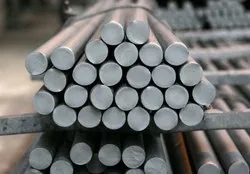Understanding 1.2316 Tool Steel: Properties, Applications, and Advantages
1.2316 is a high-quality tool steel that is known for its excellent corrosion resistance, good toughness, and high wear resistance. This steel is widely used in the manufacturing of various industrial components such as injection molds, dies, and other tools that require high precision and durability. In this article, we will discuss the properties, applications, and advantages of 1.2316 tool steel.
Properties of 1.2316 Tool Steel:
- Chemical Composition: The chemical composition of 1.2316 tool steel is as follows:
- Carbon (C) – 0.33-0.45%
- Chromium (Cr) – 15.50-17.50%
- Molybdenum (Mo) – 1.00-1.30%
- Silicon (Si) – 0.30-0.50%
- Manganese (Mn) – 1.00-1.30%
- Phosphorus (P) – 0.030% max
- Sulfur (S) – 0.030% max
- Hardness: The hardness of 1.2316 tool steel ranges from 280-325 HB (Brinell hardness).
- Corrosion Resistance: 1.2316 tool steel is highly resistant to corrosion due to the high chromium content in its chemical composition. It can withstand exposure to various chemicals, acids, and other corrosive substances.
- Toughness: 1.2316 tool steel exhibits good toughness, which makes it ideal for applications that require high impact resistance.
Applications of 1.2316 Tool Steel:
- Injection Molds: 1.2316 tool steel is widely used in the manufacturing of injection molds due to its high wear resistance, excellent corrosion resistance, and good toughness. It is suitable for the production of large and complex injection-molded parts that require high precision and durability.
- Dies: 1.2316 tool steel is also used in the manufacturing of dies for the production of components that require high precision and durability. It is ideal for the production of stamping dies, extrusion dies, and forging dies.
- Other Tools: 1.2316 tool steel is used in the manufacturing of various other tools that require high precision and durability. These include cutting tools, shear blades, and other industrial components.
Advantages of 1.2316 Tool Steel:
- High Wear Resistance: 1.2316 tool steel exhibits high wear resistance due to the presence of chromium and molybdenum in its chemical composition. This makes it ideal for applications that require high durability and long service life.
- Good Corrosion Resistance: 1.2316 tool steel is highly resistant to corrosion, which makes it ideal for applications that require exposure to corrosive substances.
- Good Toughness: 1.2316 tool steel exhibits good toughness, which makes it ideal for applications that require high impact resistance.
- High Precision: 1.2316 tool steel is suitable for applications that require high precision due to its excellent dimensional stability and uniformity.
Conclusion:
1.2316 tool steel is a high-quality steel that exhibits excellent corrosion resistance, good toughness, and high wear resistance. It is widely used in the manufacturing of various industrial components such as injection molds, dies, and other tools that require high precision and durability. The advantages of 1.2316 tool steel include high wear resistance, good corrosion resistance, good toughness, and high precision. If you are looking for a steel that can withstand exposure to corrosive substances and provide high durability, 1.2316 tool steel is an excellent option. With its ability to withstand high impact, it is also ideal for applications that require high toughness. Additionally, 1.2316 tool steel is known for its uniformity and dimensional stability, making it suitable for applications that require high precision.
When working with 1.2316 tool steel, it is important to ensure proper heat treatment to achieve the desired hardness and properties. The steel should be annealed before machining, and then hardened and tempered for use in applications that require high wear resistance.
Overall, 1.2316 tool steel is a reliable and versatile material that can be used in various applications across different industries. Its excellent properties and advantages make it a popular choice among manufacturers and engineers. By understanding its properties, applications, and advantages, you can make informed decisions when selecting materials for your projects and ensure optimal performance and longevity of your components and tools.



